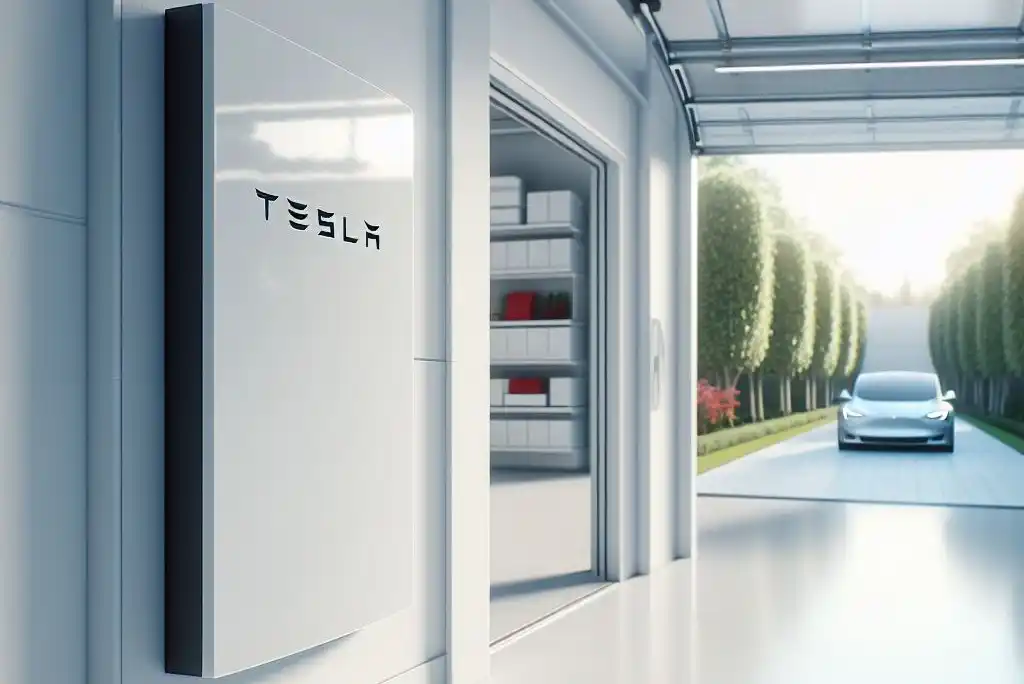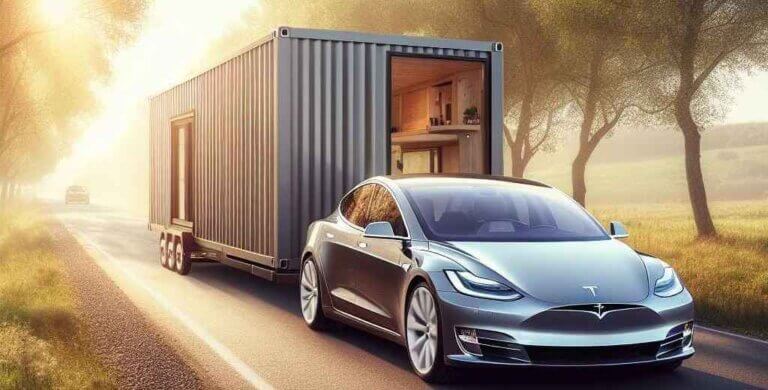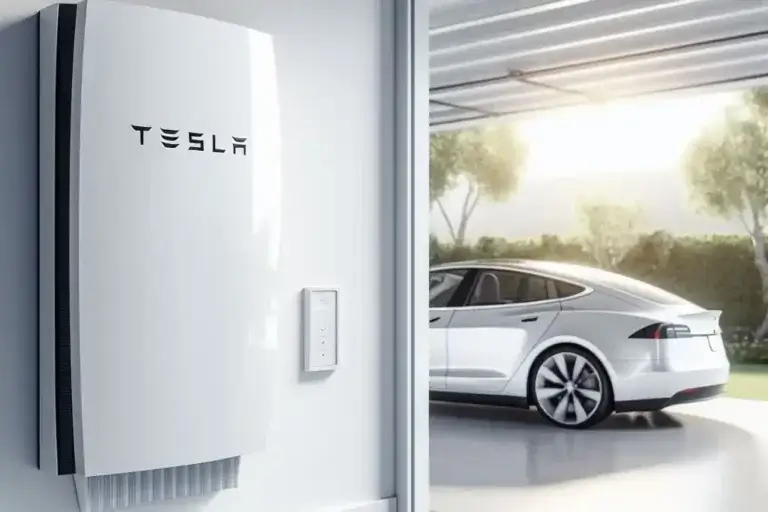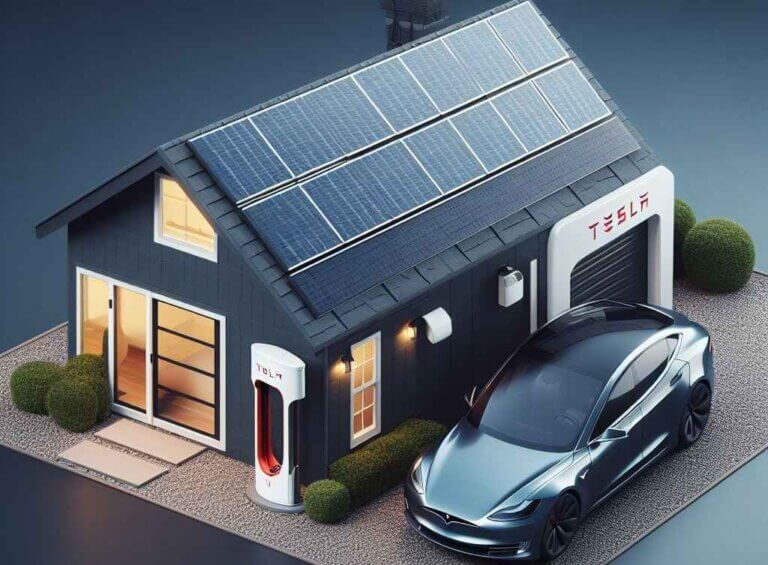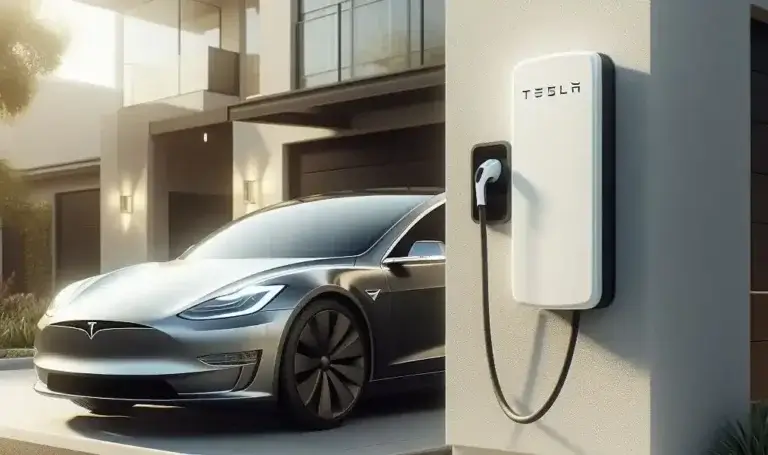Does a Tesla Powerwall Pay for Itself?
Installing a Tesla Powerwall battery system is a major investment for any homeowner. With price tags starting at around $10,000 for a single Powerwall, it’s natural to wonder – will this actually pay for itself over time? Or will I be stuck paying off an expensive battery without seeing real savings?
In this comprehensive guide, we’ll break down all the nitty-gritty details to help you decide if the Tesla Powerwall cost is worth it in the long run. We’ll look at factors like how much you can actually save on your electricity bill, a timeline for return on investment, how much power a Powerwall can provide, and more.
Plus, we’ll answer some common questions like:
- How much does the Tesla Powerwall really cost?
- How many years would it take to pay off the Powerwall?
- What tax credits or incentives are available to help reduce the cost?
- Is one Powerwall enough, or do you need multiple batteries?
By the end, you’ll have all the key info to determine if investing in a home battery system like the Powerwall can save you money over time or if you’d just be shelling out cash with little financial payoff. Let’s dive in!
How Much Does the Tesla Powerwall Really Cost?
First things first, how much does this battery storage actually set you back? As with most major home upgrades, the cost of a Tesla Powerwall has a few parts:
- Hardware Cost – This covers the actual Powerwall battery unit, the supporting hardware like inverters and gateways, as well as any cabling, conduits, or enclosures. All the physical gear that gets mounted on your home. A single Powerwall unit with basic hardware runs around $10,500.
- Installation Cost – The labor, permits, and any incidentals to have a certified installer mount the Powerwall system and integrate it with your home. Installation costs can vary widely but often add about $2,500 to $5,000 depending on system complexity and your local labor costs.
- Engineering & Design – For more complex installs, some additional engineering time may be required to properly size and design the full system. This can tack on around $1,000 or so in additional professional services.
When all is said and done, a full single Powerwall installation often lands around $12,000 to $17,000, with most coming in $14-15k range. That’s no small chunk of change!
Of course with any major home project, costs can be higher or lower depending on exact specifications. Additional Powerwalls, upgraded inverters, complex installs, and enhanced warranties can all quickly increase the total cost.
On the flip side, federal tax credits, local rebates, and pairing storage with new solar panel installs can help reduce the price tag. We’ll cover those money saving options a bit later on.
But for now, it’s reasonable to plan for a starting budget of around $12,000 to $15,000 if you want to install a Powerwall battery.
How Many Years Would It Take a Tesla Powerwall to Pay for Itself?
Alright, you’ve wrapped your head around the upfront cost to purchase and install a shiny new Powerwall. Now for the real million dollar question – how long would it take to recoup that investment through energy savings?
1 year? 5 years? 10 years? Never??
Well, the exact payback period comes down to your specific energy usage, electricity rates, and financial incentives. But we can walk through some typical scenarios to estimate realistic ranges:
- For a household using 30 kWh per day without any solar panels, a single Powerwall may pay for itself in around 15-20 years
- For an average home with rooftop solar system already installed, the payoff timeframe drops to around 7-12 years
- In regions with very high electricity rates ($0.30+ per kWh), payback can happen in as little as 5-7 years
So under the best case scenario with high energy rates and existing solar infrastructure, you could recoup the cost in around 5 years. But in more average scenarios without solar power, you may be looking at 15 years or more before the hardware pays itself off.
Let’s walk through some more specifics on how energy usage, electric rates, incentives, and other factors can impact the cost savings…
How much energy does your household use?
The more energy your home consumes on a daily basis, the faster a battery system can save you money by storing lower cost energy from solar energy or the grid during off-peak times for use later when rates are higher.
For example, a high usage household that goes through 80-100 kWh per day will have more opportunities to capitalize on things like Time-of-Use rate arbitrage and peak demand charge reduction than a efficiency household using just 30 kWh per day.
Of course no one wants to use more energy solely to make a battery pay off faster! But existing usage levels do impact how quickly you may see returns.
What are your local electricity rates?
Electricity rates have a huge impact on the Powerwall’s potential to cut your utility bills. In regions like California and Hawaii with extremely high energy prices ($0.30+ per kWh), the savings from intelligently managing energy with a battery are much greater.
Places where grid power remains relatively cheap around $0.12 per kWh will see notably longer payback periods. In a low-cost region, getting solar panels first may be a faster path to energy savings versus jumping straight to storage.
Also consider what Time-of-Use or demand charge rates are in your area. The Powerwall shines when you can automatically shift usage away from peak pricing periods.
What tax credits or incentives are available?
Federal and local incentives can seriously cut down the upfront price tag of a Powerwall, shortening the payback timeframe.
The federal investment tax credit (ITC) offers a flat 26% credit for installing a home battery system. So that shaves over $4,000 off the gross price right off the bat. Many local utility companies and states also offer additional rebates of $1,000 or more.
In certain regions you may also qualify for low-interest financing or long-term payment plans from the utility which helps ease the burden.
When financial incentives can reduce the starting price by 30-50%, the path to payback speed up considerably. Be sure to explore all available options!
What system size should you get?
Available energy capacity plays a crucial role in determining potential bill savings and payback timeline. The small Powerwall option provides 13.5 kWh of storage while the large tops out at 27 kWh.
With average energy consumption around 30 kWh per day, a single small Powerwall can only cover less than half of most household’s daily usage. This limits the ability to truly slash electric bills or power the home during long outages.
In many cases, getting multiple Tesla Powerwalls installed can multiply savings and speed up ROI. Of course this adds substantially to the starting price tag which is a tradeoff.
When considering system sizing, run the numbers on projected savings from additional capacity to find the sweet spot on units needed to optimize for fastest payback.
How Much Power Can a Tesla Powerwall Provide?
We’ve covered the financial aspects in depth, but what can a Powerwall actually do for you from an energy perspective? How much power does it supply to run your home essentials?
Key specs to understand:
- 5kW power output – The continuous power discharge rate, defines how much load you can run. 5 kW equates to roughly powering 3-5 major appliances or key loads.
- 13.5 or 27 kWh capacity – Total energy storage capacity. 13.5 kWh provides 1-2 days backup for typical homes. Upsize to 27 kWh for 2-4 days.
- 10kW peak / 5kW continuous power input – Charge rate from solar panels or grid connection. Defines how quickly the battery can recharge.
- 99% round trip efficiency – Minimal energy loss when charging and discharging.
- 15 year warranty – Long assurance of reliable performance.
With 5kW / 13.5kWh output capability, the standard Powerwall configuration is designed to run critical loads like refrigerators, lighting, internet modems, and select appliances during grid failures. This keeps food from spoiling, medical devices operational, and maintains connectivity – but likely won’t power heavier loads like HVAC systems for extended periods.
To keep an entire home running, scale up to multiple Powerwall units or boost inverters to reach desired backup targets. Some key power benchmarks:
- 5-10kW for critical load backup (Lite backup for outages)
- 15-25kW for full home backup (4300+ sqft houses)
- 30+ kW for very large homes & pools
Having autonomous backup power on hand provides tremendous peace of mind for homeowners wanting to prepare for extreme weather events and possible emergencies ahead.
Powerwall Warranty & Longevity
Making an investment as large as a home battery pack understandably comes with questions around expected lifetime and warranties for piece of mind. So what assurances does Tesla provide?
The Tesla Powerwall officially comes with a 15 year warranty that guarantees:
- At least 85% usable capacity remaining after 10 years
- At least 70% capacity for 15 years
- Operable within specs during 15 year period
If the battery underperforms and no longer holds a 70% charge or suffers complete failure before year 15, Tesla will repair or replace the unit as necessary.
Anecdotally, early Powerwall adopters have shared stories of units operating fine even after 5-7 years installed. And with software updates over the air and liquid cooling systems keeping cell temperatures in check, they seem well engineered for the long haul.
Nonetheless, 15 years is still a decent chunk of time. And it’s likely that a replacement battery 10+ years from now will hold 2-3x capacity at a fraction of the cost.
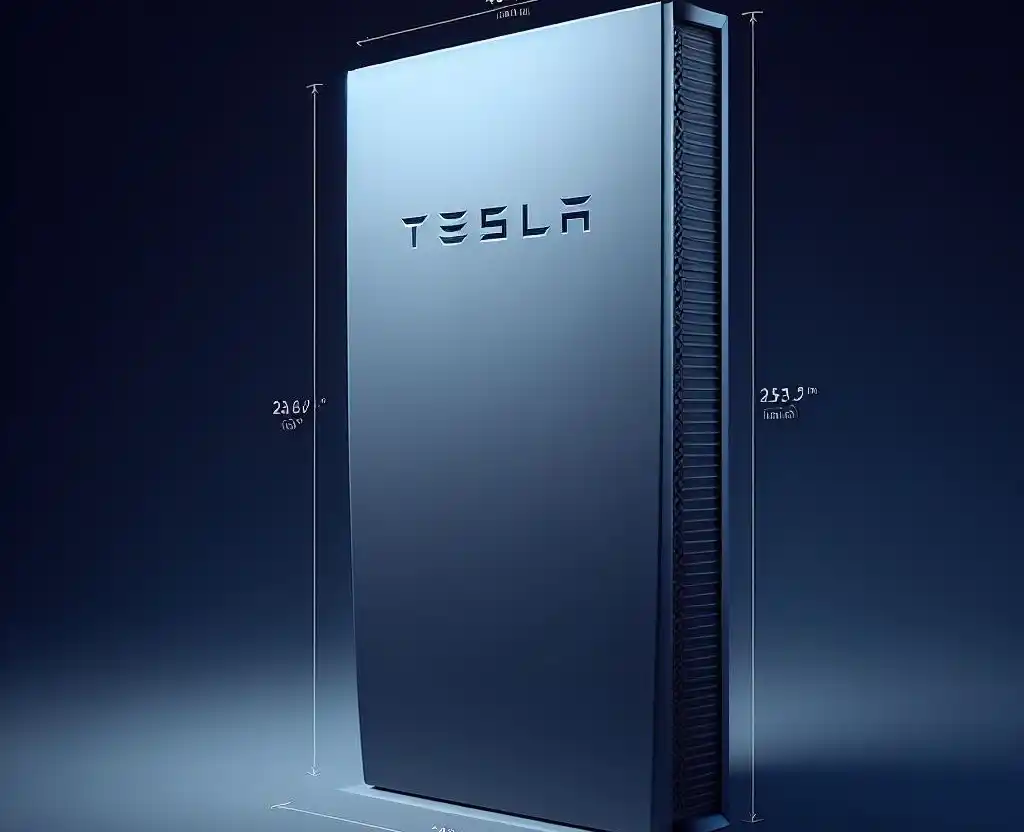
So while the Powerwall warranty should provide adequate coverage for most, peeking ahead at future technology improvements shows how today’s capacity and costs might evolve.
Will a single 13.5 kWh Powerwall still make sense in 2035 if you can get a 30 kWh LFP battery for $3,000? Perhaps not. But early adopters taking the plunge today reap the benefits now when grid instability poses real reliability concerns.
Plus these pioneering deployments spur the innovations that accelerate development of better and cheaper solutions ahead. The rising tide of storage lifts all boats in the future grid-edge electric ecosystem.
Powerwall Return on Investment FAQs
We’ve covered all the core analysis on Powerwall costs, savings potential, and expected longevity. Now let’s wrap up with some common questions looking at ROI feasibility from a few additional angles:
Does a Powerwall increase home value?
Adding a Tesla battery does provide positive resale value from home buyers interested in energy resilience and independence. Estimates range from recouping 50-75% of the gross hardware and install price. So while it may not fully pay for itself directly from bill savings, value from resale can make it more cost effective long term.
Can you go off-grid fully with a Powerwall?
Technically yes, but you need ample solar panels (likely 10kW+ systems) and several Powerwall units to provide full home backup. The costs compound quickly for off-grid capabilities unless you have major solar already. For grid-tied systems, one or two Powerwall units make the most financial sense for now.
What about future battery advancements?
Battery tech will undoubtedly keep improving over the next decade with capacity expansions and cost declines. So future ROI timeframes may shorten considerably. Many experts suggest jumping in now if the core value resonates, while continuing to monitor landscape shifts periodically if price matters most.
Could Powerwalls or solar ever pay for themselves in full?
In Australia, some would argue they already have! With extreme electricity prices touching $0.50+/kWh in areas now, solar and batteries hit payoff periods way under 5 years. If energy rates globally rise to similar levels long term, full ROI becomes far more feasible during usable lifespans. For now continued incentives sweeten viability.
Conclusion – Weighing the Pros & Cons of Investing in a Powerwall
Installing a home battery from Tesla clearly carries a hefty upfront investment, especially for households without existing Tesla solar infrastructure. While financial payback remains (relatively) extended even under best case scenarios, fundamental value still exists.
Having backup power provides tremendous home resilience and liberates families from dependence on unreliable & increasingly expensive grid infrastructure. Early adopters reap energy savings immediately. Plus with warranties protecting against duds and residual resale value after removal, risks feel relatively mitigated.
For the eco-conscience, moving towards 24/7 emission-free energy also accelerates renewable energy adoption supporting worldwide transitions required to stabilize planetary health. Your storage capacity adds tangible fossil displacement now when it matters most.
Still, the long and short of it remains – Powerwall economics stretch traditional definitions of “worthwhile”. Units certainly won’t fly off warehouse shelves if individuals make decisions purely based on today’s rate structures and limited incentives.
But for those seeing the big picture in an age when grid stability no longer feels guaranteed, perhaps this infrastructure offers insurance against a turbulent future. And peering out 5+ years, rapidly declining storage costs may well justify investments that feel just slightly premature today.
You could certainly stash an extra $15k into standard stock market accounts and watch it mature safely over time with steadier upside. But unlike a Powerwall, that value can’t yet directly power your lives if the lights go out when you most need them on.
Whether a Tesla Powerwall makes financial sense ultimately depends on individual circumstances and priorities. Carefully weighing the initial costs and potential benefits alongside personal values and environmental considerations can lead to an informed decision. For those seeking energy independence, long-term financial savings, and environmental responsibility, the Powerwall holds significant potential.

